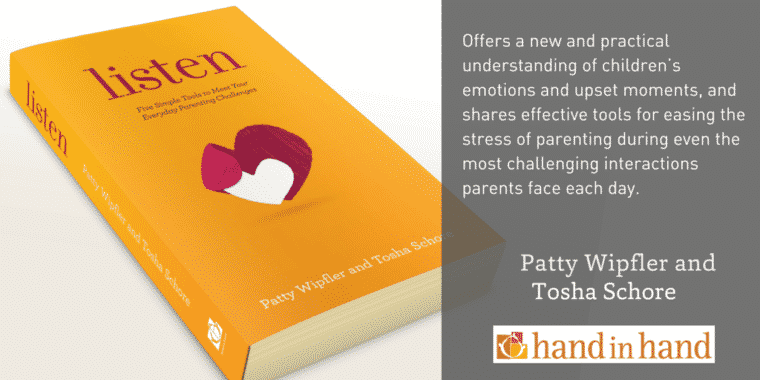![]()
In many parenting programs, rewards and punishment reign large.
So an approach focussed on connection and listening offers therapists a refreshing change.
Hand in Hand's five empathetic listening tools form an approach that “can be described as a relationship-based, emotion-focused, trauma-informed parenting program,” says Maya Coleman, a child clinical psychologist, who also now runs Professional Intensives courses to introduce clinicians to the Hand in Hand approach.

Despite her training, Maya discovered Hand in Hand Parenting when she felt ill-equipped for the emotional work needed for her own parenting. “Despite wide access to evidence-based approaches and teaching them, I didn't enjoy being a parent,” says Maya. “I felt like a piece was missing.”
The healing approach Hand in Hand endorses examines the way trauma and stress impact children's behavior, and encourages the child to release that emotion, through play-based techniques and supported crying. There is also an emphasis on working with the client's whole supportive team – another point of difference from other programs.
After a few years of using the techniques in her own family, Maya began using them professionally, and has been pleased with their reach, which has helped even in cases of deep trauma.
Closer connections between family members happen surprisingly fast.
“It's really something to hear back from a family after working with them a week or two that there's been so much laughter and play,” Maya says.
Many therapists find the tools allow them to progress in their client relationship and experience unexpected results. Here are four elements that set Hand in Hand Parenting apart in professional practice:
Endorses Emotional Release over Self-Regulation:
Handling emotions and teaching techniques for self-regulation are at the crux of many programs. Hand in Hand differs. It encourages processing emotion as part of the healing process. Children are given space to cry, scream, or work through feelings using physical contact. Laughter is also used to offload and play is readily encouraged. A therapist will often allow a child to direct and lead sessions. “The approach reflects a deep understanding of what happens when people have deep or traumatic experiences as well as the mechanisms we all use to recover, ” says Maya Coleman.
Fosters a Positive Parent and Child Interaction:
Research shows that positive parent / child interaction is a vital element in successful parenting programs. Hand in Hand puts emphasis on reaching everyone involved in the client's case, and support for parents is seen as equally important as it is for the child.
“It has definitely shifted the lens with which I view the family and has influenced our approach to what the family might need and how we can support them. I often consider a connection plan with the families to see what they might need,” says Tom Anderson, a family case worker working in a therapeutic centre, who is now taking Hand in Hand's Instructor Certification.
The wide range of online and offline Hand in Hand Parenting resources offers parents an immediate place to go in times of stress or trauma, outside of practice, as well as a lasting, and very supportive community. “Hand in Hand offers them so much to turn to and find comfort in and that leads parents to a very comfortable, healthy community,” says Beth Ohanneson, a family therapist.
Listening not Regulating:
By the time a family seeks professional help, says family therapist Robin Setchko, parents can be overwhelmed and overtly conscious of the behavior their child presents. During sessions, they are invited to offload these concerns in a safe and non-judgmental place as the therapist listens. The therapist's role as a listener especially resonated with Robin. “I think we all went into these fields because we understand the healing process of listening, and bringing what's inside out,” she says.
The process has a reciprocal nature between parents and children, that can only be good, she says. “Just as I listen to them, they listen to their child,” she says. There is no better way to get to know them. “To return to deep-loving their child,” she says.
Fast-Acting Results
Therapists find the theory and tools simple to pick up and just as easy to apply, with plenty of room to tailor each according to need. And once the tools have been introduced in practice, they can be used regularly within the family unit.
“All of the tools are basically what is most effective about therapy condensed into a very applicable and accessible form,” says Savannah Sanfield, a psychotherapist that recently enrolled in Hand in Hand's eight-week Professionals Intensive.
Savannah used the tools with her own family.
They filled a space, she says, that a Masters in Psychology, five years clinical training, personal therapy, and parenting books and classes couldn't.
From the Hand in Hand Toolbox:
Discover the Clinical and Therapeutic Benefits of the Hand in Hand Parenting approach here.
Join our free call on how Hand and Hand can help families with Aces
